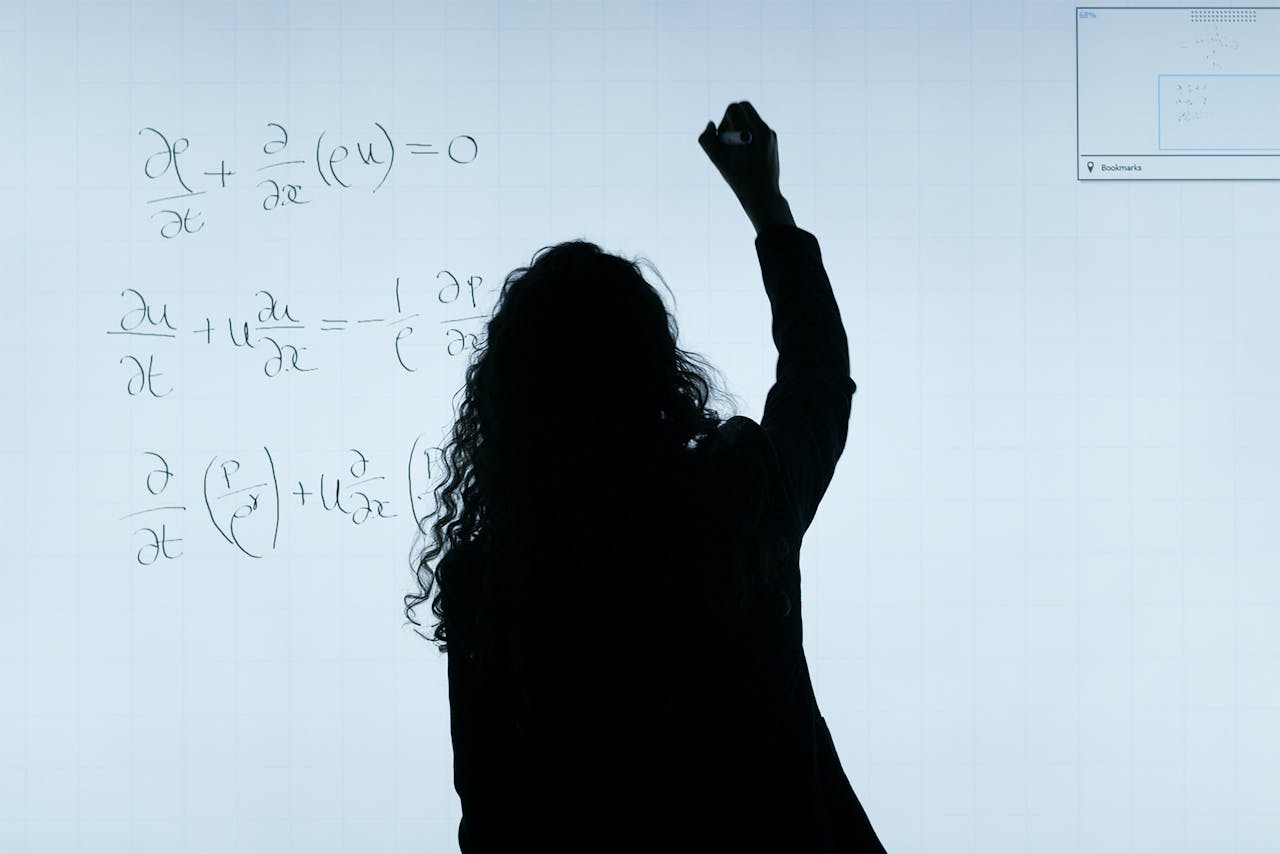The 2025 Nobel Prize in Physics has gone to John Clarke, Michel H. Devoret and John M. Martinis for something that sounds abstract and technical: “the discovery of macroscopic quantum mechanical tunnelling and energy quantisation in an electric circuit.” Behind the careful wording is a genuine shift in how we understand reality, and how we design technology. The prize recognises experiments that proved, in the laboratory, that quantum behaviour is not limited to lonely atoms in carefully isolated boxes. It can govern entire electrical circuits you can hold in your hand. That changes both physics and engineering.
To understand why, start with quantum tunnelling itself. In classical physics, a particle that does not have enough energy to cross a barrier cannot cross it. You throw a ball at a wall. The ball hits the wall. The ball bounces back. End of story. In quantum mechanics, a particle is also a wave, and that wave has a small but non-zero chance of appearing on the other side of the wall. The particle has “tunnelled” through, despite not having the energy to climb over. This is quantum tunnelling. It is one of the strangest and most fundamental features of quantum physics, and it underpins familiar technologies such as nuclear fusion in stars and the scanning tunnelling microscope. Until recently, though, tunnelling was treated as a microscopic trick: something electrons do, something protons do, but not something you would ever see in a lump of matter large enough to touch.
The work honoured this year deliberately attacked that assumption. In the 1980s, Clarke, Devoret and Martinis built a special kind of superconducting circuit known as a Josephson junction. A Josephson junction is basically two superconductors separated by a very thin insulating barrier. Superconductors are materials that carry electrical current with zero resistance at very low temperatures. Because resistance drops away, the phase of the superconducting current – a collective quantum property shared by billions of electrons moving in lockstep – can behave like a single quantum object. This is already strange: instead of tracking individual electrons, you can treat the entire circuit as if it were one artificial atom with its own energy levels. NobelPrize.org+1
The team then did two crucial things. First, they showed that this macroscopic circuit could tunnel. The circuit sat in what should have been a stable “zero-voltage” state. Classically, it should have stayed there unless it was pushed hard enough to jump a barrier. Instead, with no classical shove, the whole system sometimes vanished out of that state and reappeared in a “finite-voltage” state, as if it had slipped through the barrier rather than climbed over it. That is quantum tunnelling, not of a single electron, but of a collective electrical state made of an astronomical number of electrons. Second, by driving the circuit with microwaves, they saw that it absorbed energy only in precise steps, like rungs on a ladder. That meant the energy in this man-made circuit was quantised: it came in discrete packets, exactly the way energy levels work in atoms.
Why is that historic? Because it answered an old and uncomfortable question in physics: how big can quantum be. For most of the 20th century, quantum mechanics lived in the small. We used it to explain electrons in atoms, bonding in molecules and the behaviour of light. The everyday world of tables, wires and circuits, by contrast, looked classical. The boundary between “quantum rules apply” and “classical rules apply” was blurry, and in some arguments almost philosophical. What Clarke, Devoret and Martinis showed is that there is no sharp dividing line. With the right materials and the right temperatures, you can force a human-scale object – an electrical circuit with billions of atoms – to behave like a single quantum particle. You do not just calculate it. You watch it happen on the lab bench.
That matters for pure science, because it confirms that quantum mechanics is not just a model for small things. It is a law of nature full stop. The laureates built what amounts to a bridge between the microscopic and the macroscopic. They took a phenomenon that textbooks said belonged to electrons and showed it in a circuit you can solder. The Royal Swedish Academy of Sciences pointed at exactly this point in its announcement, saying the experiments “demonstrated both quantum mechanical tunnelling and quantised energy levels in a system big enough to be held in the hand,” and in doing so made quantum physics “concrete on a macroscopic scale.” NobelPrize.org+1
It also matters because this was not just philosophy. It was the birth of hardware. Superconducting qubits, the building blocks of many of today’s most advanced quantum computers, descend directly from this work. A qubit is a quantum bit: something that can be in a combination of 0 and 1 at once, and can become entangled with other qubits. The easiest way to make a qubit in practice is to build a tiny superconducting circuit that behaves like the artificial atom described above, with discrete quantum energy levels you can control using microwaves. That architecture, often called circuit quantum electrodynamics, is the backbone of today’s superconducting quantum processors, including the processors used by groups such as Google to claim “quantum supremacy” in 2019 and to push toward fault-tolerant quantum computing in the 2020s. Martinis went on to lead Google’s quantum computing effort; Devoret helped drive the design of highly stable superconducting qubits such as the “transmon”; Clarke’s work on ultra-sensitive superconducting devices shaped modern quantum measurement.
The link to quantum computing is direct. Quantum tunnelling and energy quantisation in macroscopic circuits proved that you could build controllable quantum states out of electrical engineering, not just exotic atomic traps. That meant you could fabricate them in something like an electronics lab, wire them up, scale them into arrays and run algorithms on them. Before these experiments, quantum computing was largely an idea. After these experiments, it became an engineering roadmap.
The same is true for quantum sensing. Devices called SQUIDs – superconducting quantum interference devices – exploit quantum effects in superconducting loops to detect unimaginably small magnetic fields. They can pick up the faint magnetic signals produced by the human brain. They are used in magnetoencephalography, a way of mapping brain activity without surgery. They are used in geology, security screening and materials analysis. Clarke in particular is known as a pioneer of SQUIDs and superconducting electronics. The same physics that allowed a circuit to tunnel like a giant particle is the physics that lets doctors record neural activity with exquisite resolution and lets engineers scan for microscopic defects in critical components.
There is also a security angle. Modern cryptography is already planning for a world in which quantum computers can break some of today’s codes. The devices born from this line of research are part of that story. Superconducting qubits are one of the main platforms racing to build large-scale quantum computers, which are expected to threaten current encryption methods and, in parallel, to enable quantum-safe communication systems based on quantum principles. The Nobel committee’s decision underlines that quantum information is no longer just a mathematical curiosity. It sits inside physical machines on real lab benches and will shape how banks, governments and hospitals protect data.
Tunnelling also matters for metrology, which is the science of measurement. Once you can get a macroscopic object to act like a single quantum state, you can use it as a reference. You can lock frequencies, voltages and currents to quantum effects instead of trusting drifting classical standards. That is vital in navigation, satellite timing, energy grids and communications. It is no exaggeration to say that better quantum standards become national infrastructure.
There is one more reason this Nobel Prize is significant. It answers a cultural doubt that has followed quantum mechanics since its birth. Quantum theory has always sounded like an insult to common sense: particles that behave like waves, objects in two states at once, influences that seem to outrun distance. For decades, people could comfort themselves with the idea that this was only true in extreme laboratory conditions, at atomic scales, far from normal life. The 2025 Physics Nobel removes that comfort. What Clarke, Devoret and Martinis proved is that the “weirdness” is not a side show. It is built into the fabric of matter, even when that matter is arranged into a chip you can hold between two fingers.
In practical terms, their breakthrough is already visible in the race to build useful quantum computers, in the use of SQUIDs to look into the human brain, in ultra-sensitive measurements for materials and geology, and in the development of future communications that are secure by the laws of physics. In historical terms, it does something even heavier: it collapses the distance between “the quantum world” and “our world.” The wall between them has turned out not to be a wall at all. It tunnels.



